1. Wang, N., X. Huang*, J. Xu, T. Wang, Z.-m. Tan, and A. Ding*. (2022). Typhoon-boosted biogenic emission aggravates cross-regional ozone pollution in China.Science Advances8 (2):eabl6166. (SCIENCE子刊) 2. Wang, N*., Wang, H., Huang, X., Chen, X., Zou, Y., Deng, T., Li, T., Lyu, X. and Yang, F., (2024). Extreme weather exacerbates ozone pollution in the Pearl River Delta, China: role of natural processes. Atmospheric Chemistry and Physics, 24(2), pp.1559-1570. 3. Wang, N*.,Du, Y., Chen, D., Meng, H., Chen, X., Zhou, L., Shi, G., Zhan, Y., Feng, M., Li, W., Chen, M., Li, Z., and Yang, F. (2024). Spatial Disparities of Ozone Pollution in the Sichuan Basin Spurred by an extreme, hot weather. Atmospheric Chemistry and Physics, 24, 3029–3042, 4. Li, T., Wu, N., Chen, J., Chan, P. W., Tang, J.,Wang, N*. (2023). Vertical exchange and cross-regional transport of lower-tropospheric ozone over Hong Kong. Atmospheric Research 5. Chen, X.,Wang N*, G. Wang, Z. Wang, H. Chen, C. Cheng, M. Li*, L. Zheng, L. Wu, and Q. Zhang. (2022). The influence of synoptic weather patterns on spatiotemporal characteristics of ozone pollution across Pearl River Delta of southern China.Journal of Geophysical Research: Atmospheres127 (21):e2022JD037121. 6. Wang, N., J. Xu, C. Pei, R. Tang, D. Zhou, Y. Chen, M. Li, X. Deng, T. Deng, and X. Huang*. (2021). Air quality during COVID-19 lockdown in the Yangtze River Delta and the Pearl River Delta: Two different responsive mechanisms to emission reductions in China.Environmental Science & Technology 55 (9):5721-5730. 7. Zou, Y., E. Charlesworth,Wang N*, R. Flores, Q. Liu, F. Li, T. Deng, and X. Deng. (2021). Characterization and ozone formation potential (OFP) of non-methane hydrocarbons under the condition of chemical loss in Guangzhou, China.Atmospheric Environment 8. Xu J, Huang X,Wang N, et al. Understanding ozone pollution in the Yangtze River Delta of eastern China from the perspective of diurnal cycles[J].Science of the Total Environment, 2021, 752: 141928. 9. Wang Z, Huang X,Wang N, et al. Aerosol‐Radiation Interactions of Dust Storm Deteriorate Particle and Ozone Pollution in East China[J].Journal of Geophysical Research: Atmospheres, 2020, 125(24): e2020JD033601. 10. Wang, N., X. Lyu, X. Deng, X. Huang*, F. Jiang, and A. Ding*. (2019). Aggravating O3 pollution due to NOx emission control in eastern China.Science of the Total Environment677:732-744.(WOB高被引) 11. Wang, N., Z. Ling, X. Deng, T. Deng, X. Lyu, T. Li, X. Gao, and X. Chen. (2018). Source contributions to PM 2.5 under unfavorable weather conditions in Guangzhou City, China.Advances in Atmospheric Sciences35:1145-115 12. Yuan, J., Z. Ling*, Z. Wang, X. Lu, S. Fan, Z. He, H. Guo, X. Wang, andWang N*. (2018). PAN–precursor relationship and process analysis of PAN variations in the Pearl River Delta Region.Atmosphere 9 (10):372. 13. Wang, N., X. Lyu, X. Deng, H. Guo*, T. Deng, Y. Li, C. Yin, F. Li, and S. Wang. (2016). Assessment of regional air quality resulting from emission control in the Pearl River Delta region, southern China.Science of the Total Environment 573:1554-1565. 14. Wang, N., H. Guo*, F. Jiang, Z. Ling, and T. Wang. (2015). Simulation of ozone formation at different elevations in mountainous area of Hong Kong using WRF-CMAQ model.Science of the Total Environment505:939-951. 15. 王同;王楠*;黄昕;丁爱军;西太平洋台风“苏迪罗”对我国珠三角地区臭氧污染影响研究,环境监控与预警,2023,1674-6732. 【专利与标准】 王楠,杨复沫;“基于卫星反演的近实时植被活性碳排放估算方法”;国家发明专利,ZL202410244944.7 【学术兼职】 1. National Science Open期刊青年编委 2. 中国环境科学学会臭氧污染控制专业委员会委员 3. 期刊审稿人:Geophysical Research Letters,Environment Science & Technology, Atmospheric Chemistry and Physics, Journal of Geophysical Research: Atmosphere,Environment Pollution, Atmospheric Research等 【获奖与荣誉】 2018.10气象科学技术进步成果奖二等奖,中国气象学会 |




